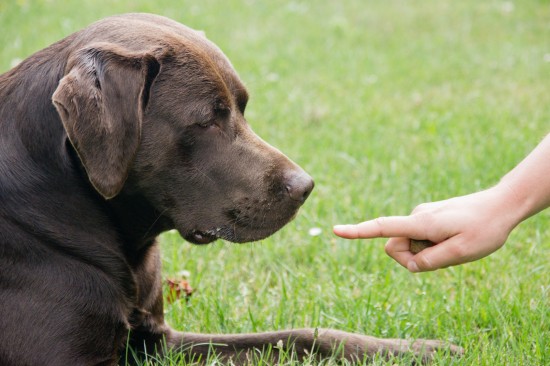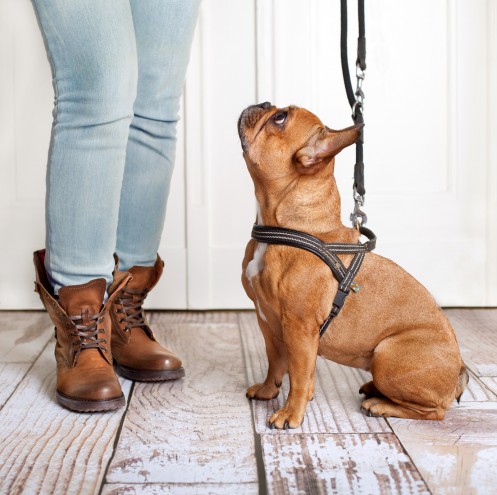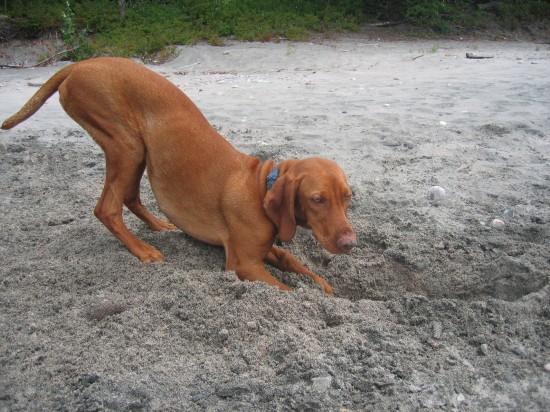

Dog aggression or otherwise negative behaviour can be very problematic for the owner of the dog, and can take many forms in the face of many different stimulus. Constructional aggression therapy is one of the great many options available to dog trainers and behaviourists to deal with problem behaviour in the dog, and one that has the added advantage of offering neither a negative response, such as a punishment, nor a lot of food treats, which can soon pile on the pounds, and also that can be a problem for dogs on restricted diets or with health problems!
Constructional aggression therapy works on the principle of operant conditioning, which is to say, changing the response that a dog receives for their behaviour and so, removing the inherent reward that the bad behaviour elicits. In many cases, aggression or problematic behaviour serves as its own reward for the dog; for instance, barking and snarling at someone will cause them to back off in most cases, ergo, the dog’s behaviour is rewarded and reinforced.
Constructional aggression therapy (or CAT for short) involves taking the trigger of the aggression itself, and then using operant conditioning to change the response that the dog gets to their aggression, ergo removing the inbuilt reward that the dog is used to it giving to them. This addresses the dog’s manifestation of their aggression and how they react in the first instance to their triggers, as they come to learn that the behaviour and reward that they previously gained from it is no longer present for them.
Dogs can easily fall into the pattern of gaining their own reward from aggression or barking defensively, in ways that you may not even realise; for instance, if your dog is apt to bark and snarl at someone approaching the house, such as the paper boy or the postman, the fact that the person in question then leaves (usually not for any reason connected to the dog, simply because they have made their delivery!) teaches the dog that they were successful, and saw off the “intruder!” Constructional aggression therapy works by changes this type of response and so, reward, so that the dog only gains something good or the thing that they were aiming for after they have stopped behaving badly.
Read on to learn more about CAT or constructional aggression therapy in dogs, and the pros and cons of this method of conditioning.
When using constructional aggression therapy effectively, the core idea behind the theory is that the trigger or stimulus only ceases once the dog modifies their behaviour, which in its turn happens when the dog leans that their bad behaviour is ineffective.
It is important to manage CAT so that you don’t start right off with a high-pressure situation or trigger that will take a long time to resolve, or a long time for your dog to finally give up and learn that their acting out will not work in this case!
Ergo, it is wise to set up a system of levels of exposure for your dog to things that they will often respond negatively, starting with something small and simple, to begin building up the association in your dog’s mind that when they do try something new in a low pressure situation, they will gain their reward. Beginning when your dog is first showing the very early signs that they might be about to start acting out will force an easier resolution than if you wait until your dog is having a full-blown episode!
If you are considering constructional aggression therapy for your own dog, it is wise to have at least one assessment and session with a behaviourist who practices the technique, in order to assess your dog’s and your own suitability to go through the process successfully
 Aspirin Poisoning In Dogs
Aspirin Poisoning
Aspirin Poisoning In Dogs
Aspirin Poisoning
 Longevity, Health Issues And Hereditary Conditions Within The Bearded Collie Dog Breed
Longevity, Health
Longevity, Health Issues And Hereditary Conditions Within The Bearded Collie Dog Breed
Longevity, Health
 Dealing With A Dog That Grabs Or Chews The Lead When Out Walking
Dealing With A Do
Dealing With A Dog That Grabs Or Chews The Lead When Out Walking
Dealing With A Do
 Why Do Dogs..? Part One
Why Do Dogs..? Pa
Why Do Dogs..? Part One
Why Do Dogs..? Pa
 4 Very Good Reasons To Adopt A Handicapped Dog
4 Very Good Reaso
4 Very Good Reasons To Adopt A Handicapped Dog
4 Very Good Reaso
Copyright © 2005-2016 Pet Information All Rights Reserved
Contact us: www162date@outlook.com